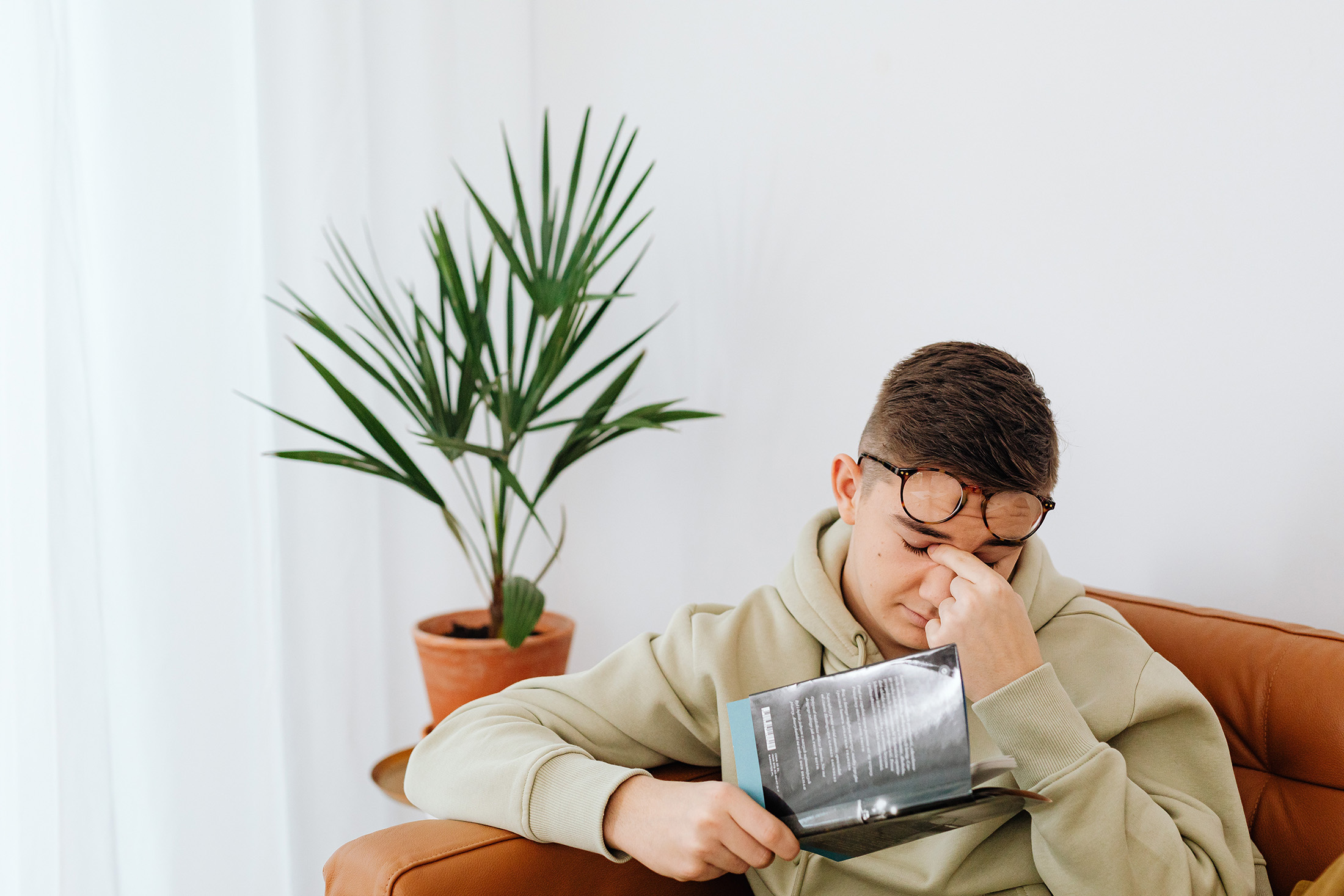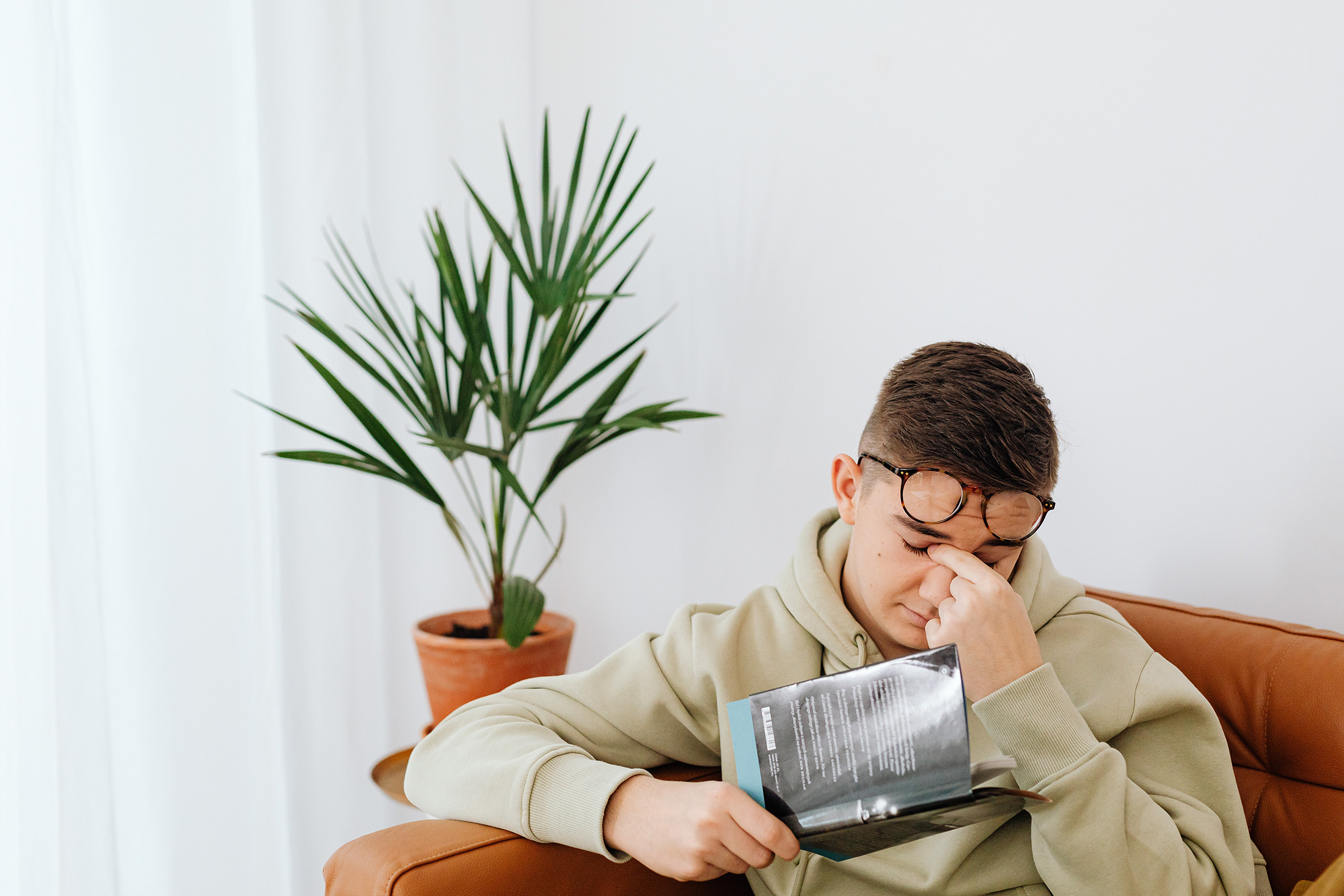Almost 85% of perception, learning, cognition, and activities are mediated through vision. It
takes precedence over all other senses. With this in mind, how often do you rest your eyes?
Whether you experience tired eyes, eye fatigue, or eyestrain, these complaints often occur from
intense and prolonged use of your eyes. Several factors, including improper or insufficient
blinking, and sustained near focus for extended periods of time, can cause eye strain. The blink
rate can significantly drop (12/min to 5/min) when you stare at a screen, book, or even during
driving, resulting in an inadequate tear film. Symptoms may include blurry vision, headaches,
light sensitivity, double vision, irritation, tearing, dryness, eyelid twitching, and squinting.
In children with high digital device usage, there may also be increased irritability, poor behavior
or reduced attention span. According to the Alberta Association of Optometrists (AAO), 28% of
parents indicate that their child experiences one or more of the above symptoms after using
digital devices. However, children may not complain of digital eye strain despite exhibiting
symptoms. In adults, the AAO indicates that Albertans spend an average of 10.5 hours using
digital devices every day. More than 70% of Albertans reported experiencing eyestrain
symptoms. While eyeglasses, blue filters, enhanced lighting, increased text size, and optimizing
screen brightness can help reduce eye fatigue, complaints continue to increase among all ages.
Therefore, for the remainder of this article, we will explore more mindful methods to practice
relaxation to rest our overactive eyes (and minds).
Consider what you put your eyes through each day: hours of screentime, lack of sleep, squinting
and scrolling, bright fluorescent lighting, and even air conditioning/heating. Not to mention the
countless stresses one encounters every day. Is it not very obvious that your eyes need a break?
In addition, staring at a bright screen in bed can exacerbate insomnia, and binging TV shows can
also exhaust the eyes. With a little awareness, we can easily understand that the eyes can
become fatigued. The muscles that allow our eyes to function get overworked, just like any
other muscle in the body. For instance, the pupils constrict for near vision using the ciliary
muscles of the eye, which dilate and relax to focus on objects in the distance. The extraocular
muscles allow the eyes to move from side to side, which explains why prolonged reading can
lead to eye exhaustion.
So how do you rest your eyes? There are several fast and easy relaxation techniques that can
reduce eye strain, leaving your eyes feeling rejuvenated. Note: If you already practice
meditation, these techniques can be combined to further enhance your experience.
One technique can be called the Palming method.
First, close your eyes. Gently press the heel of each palm over your eyes. It should feel like a very
soft massage. Breathe deeply and relax, and be aware of the blackness. While doing this, you
may temporarily see various colors or patterns. Continue gazing into the blackness until these
colors fade away. The palming method allows for an easy reset of your vision, reducing muscle
strain and dryness. Upon removing your palms from your eyes, your vision may take a moment
to re-stabilize.
Another technique, often called the 20:20:20 Rule, is an easy rule of thumb to remind you to
rest your eyes.
For every 20 minutes of screen time, look at an object 20 feet away for 20 seconds. This is an
easy method to release tension in the eye muscles during the day.
The practice of resting your eyes will not only benefit the eye muscles, but will also allow a
moment to relax the mind. Consider taking some deep breaths and doing some shoulder
stretches as well. These simple and quick techniques can help reduce stress and ensure you are
at your best. Remember, your eyes follow your attention and intention. Eyestrain may be your
body’s way of notifying you that you should take a break from overwork or mindless social
media use. We rely so much on our sense of sight that it can become invisible to us. Resting the
eyes is a great way to be aware of what we often take for granted.





